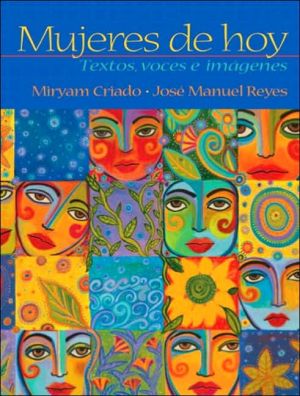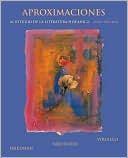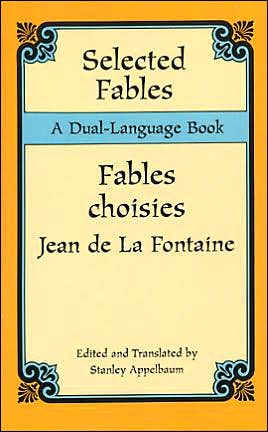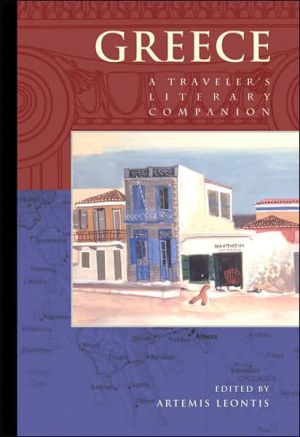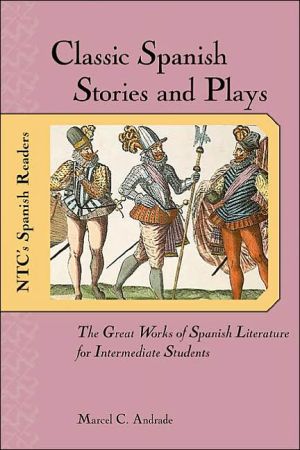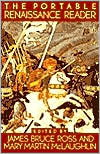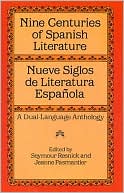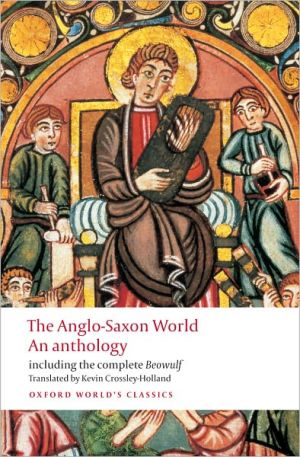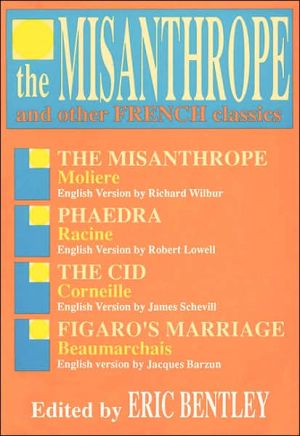Mujeres de Hoy: Textos, Voces e Imágenes
The Spanish-speaking world has been blessed with gifted women authors whose literary works have deepened the exploration and understanding of the Hispanic identity and culture. Mujeres de hoy: textos, voces e imagines is a content-based collection of such works by Spanish, Spanish American, and Latina women designed for upper-level literature courses.\ Each chapter, which includes two literary selections by women writers, examines different sides of the same topic under exploration. These...
Search in google:
Exposes the reader to all sorts of texts (newspaper articles, testimonies, art, interviews, films, songs and web activities) and gives them the opportunity to examine the diversity and complexity of the Hispanic world and the richness of its culture.This is a content-based collection of literary works by Spanish, Spanish American, and Latina women. Each chapter includes two literary selections that show different sides of the topic under exploration.Designed for advanced Spanish literary exploration.
PREFACIO\ Mujeres de hoy: textos, voces a imagines is a content-based collection of works by Spanish, Spanish American, and Latina women designed for upper-level courses. Each chapter includes two literary selections that show different sides of the topic under exploration. Other materials complementing these readings are: newspaper articles, testimonies, art, interviews, films, songs, and Web activities. By exposing students to all sorts of texts (from literature to different manifestations of popular culture) and media, they will have the opportunity to examine the diversity and complexity of the Hispanic world and the richness of its culture.\ The topics selected deal either with contemporary issues that challenge today's society—immigration, minority groups, ecology—or human experience such as procreation or the construction of a gendered identity. The approach to every issue, as well as the activities in every chapter, has been designed to make sure that they are completely inclusive of male and female experience. Every topic is presented through a non-biased approach; therefore, male students will not feel alienated in the classroom. All students will definitely benefit from each other's diverse or similar perspectives. Furthermore, through the readings and exploration of the topics, they will soon learn how gender construction, race, religion, social status, and many other factors affect our understanding of the world.\ The Spanish-speaking world has been blessed with excellent women authors and artists who not only have created striking works of art, but also have deepened the exploration and understanding of the Hispanic identity andculture. Nowadays, more colleges and universities are responding effectively to the demands of students (male and female) to learn about the silenced voices in society. Women's presence and participation in the Hispanic world have changed dramatically and have become more visible over the past decades. However, most literature surveys only include a small female representation, and some content-based textbooks have a chapter to account for them, as if women were an appendix, not an intrinsic part of the culture under study. Women account for 52% of the Hispanic population around the world. Excluding them from the study of the Hispanic culture reinforces stereotypes and perpetuates their invisibility. TEXT FEATURES Introduccion al tema\ The objective of this section is to encourage students to express their concerns, prejudices, preconceptions, or misconceptions about the topic of the chapter. It includes a brief text with general information about the topic of the chapter and questions to encourage brainstorming of ideas. Primera lectura\ Informacion biogrdfica. Brief biographical information about the author, her major works, and literary significance are presented in this section.\ Actividades de prelectura. Pre-reading activities help students focus on the themes that they will later encounter in the reading.\ Mientras leemos. While-reading activities ensure that students learn new vocabulary and grasp the main ideas of the reading. Lectura\ Analisis del contenido. This section is designed to make sure students have understood not only the plot, but also the subtle information that confirms the final meaning of the reading. This section prepares students to deal with more advanced analysis.\ Situaciones. By thinking about a specific problem in the reading and creating a role-play, students immerse themselves in the character's conflict, which provides insight to motives and behaviors otherwise meaningless or obscure to them.\ Analisis literario. The written and communicative activities included in this section are designed to promote an in-depth analysis of the reading. Literary strategies, structure, theme, and characters are under scrutiny in order to go beyond a superficial reading toward a more profound understanding of the meaning of the text. El mundo en que vivimos\ This section introduces other types of narratives. The first reading is an essay that explores the topic at hand in depth and offers students the necessary vocabulary to express their opinion on the issues. The second text is a testimony. The purpose of this section is to advance the exploration of the topic by means of contrasting different voices and points of view. All texts are integrated with one another. Segunda Lectura\ The second reading is used as a counterpoint to the first reading. It offers a different view and/or approach to the topic of the chapter and follows the same internal structure as the first reading. Establece vinculos\ After examining the issue at hand through various texts, students are now ready to go one step further and contrast the inferences they have reached from the readings with their own points of view, their lives, and their values. Actividades complementarias\ Supplementary activities, based mainly in media—songs, movies, poems, Web pages, etc.—enable students to go a step further in their analysis of the topic of the chapter. Bibliografia\ A list of literary works, as well as other books that deal with the chapter topic, is included at the end of each chapter. Ancillaries\ www.prenhall.com/mujeresdehoy: There are links with interesting information to help students complete the Web-based activities located in different sections of every chapter. Their purpose is to encourage students to further investigate the issues by reading Spanish newspapers, getting acquainted with international organizations, and finding other approaches to the topic under exploration.
Unidad 1. Identidad y construcción de género Primera lectura “¡Mujer!” de Juana de Ibarbourou (Uruguay) “Tú me quieres blanca” de Alfonsina Storni (Argentina) “Meditación en el umbral” de Rosario Castellanos (México) Testimonio “Construcción de la masculinidad y relaciones de género” de Laura Asturias (Guatemala) Segunda lectura “La muñeca menor” de Rosario Ferré (Puerto Rico) En la prensa “Entre el machismo y el negocio” (España) Actividad complementaria Mercedes Sosa “Alfonsina y el mar” (Argentina)Unidad 2. La esfera pública y la privada: los roles sociales y el trabajo Primera lectura “Cuando todo brille” de Liliana Heker (Argentina) “Mujeres, trabajo y empleo: una visión de género” (Costa Rica) Testimonio “Ser profesional” de Victoria Prego (España) Segunda lectura Amor, curiosidad, Prozac y dudas de Lucía Etxebarria (España) En la prensa “En México hay 4.5 millones de madres sin cónyuge o pareja” (México) Actividad complementaria “Casida a una casada” de Gloria Fuertes (España) Unidad 3. Relaciones interpersonales: amistad y amor Primera lectura La mujer habitada de Gioconda Belli (Nicaragua) Testimonio Paula de Isabel Allende (Chile) Segunda lectura La última niebla de María Luisa Bombal (Chile) En la prensa “Una regla del romance es conocer bien su target” (Ecuador) Actividad complementaria Christina Rosenvinge “Tú por mí” (España) Unidad 4. Maternidad y relaciones filiales Primera lectura Floreros de alabastro y alfombras de Bokhara de Angélica Gorodischer (Argentina) Testimonio “Mi hijo ha crecido este verano” de Susana March (España) Segunda lectura “La niña sin alas” de Paloma Díaz Mas (España) En la prensa “La maternidad como negocio” (Paraguay) Actividad complementaria “Alas de mariposa” de Juanma Bajo Ulloa Unidad 5. Relaciones de poder: el individuo y la sociedad Primera lectura “El mejor” de ángela Hernández (República Dominicana) Testimonio “De toque a toque” de Elizabeth Salguero Carrillo (Bolivia) Segunda lectura La plaza del diamante de Mercé Rodoreda (Cataluña, España) En la prensa “Globalización, antiglobalización” (España) Actividad complementaria “Tesis” de Alejandro Amenábar (España) Unidad 6. Voces silenciadas Primera lectura “ Ellos destruyeron la casa de mi madre” de Caly Domitila Cane’k (Guatemala) “Volver al pasado” de Edelma Zapata Pérez (Colombia) “Cimarrones” de Cristina Rodríguez Cabral (Uruguay) “Not neither” de Sandra María Esteves (EEUU) Testimonio Si me permiten hablar...Testimonio de Domitila una mujer de las minas de Bolivia de Domitila Chungara (Bolivia) Segunda lectura “El encantamiento” (Colombia) Lo que está en mi corazón de Marcela Serrano (Chile) En la prensa “Se necesita coraje para que lo público y el bien común tomen sentido (Colombia) Actividad complementaria Testimonios de mujeres gitanas (España) Unidad 7. Un mundo de emigrantes Primera lectura La nave de los locos de Cristina Peri Rossi (Uruguay) Testimonio Dalia (República Dominicana) Segunda lectura “El volcán y su volcana” Elena Poniatowska (México) En la prensa “Melva” (España) Actividades complementarias “Flores de otro mundo” de Iciar Bollaín (España) “Visa para un sueño” de Juan Luis Guerra (República Dominicana) Unidad 8. Ecología y pobreza Primera lectura “Ocre, el quirquincho” de Libertad Demitrópolus (Argentina) Testimonio Rigoberta, la nieta de los mayas de Rigoberta Menchú Tum (Guatemala) Segunda lectura “Conversación con Simone Weil” de Blanca Varela (Perú) En la prensa “Indígenas amazónicos luchan por su supervivencia” (Ecuador) Actividad complementaria “¿Dónde jugarán los niños?” y “Justicia, tierra y libertad” de Maná (México)
